Dog Walkin’ Wellington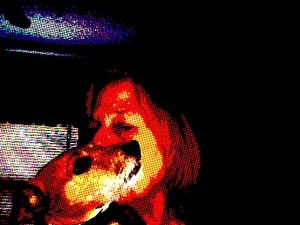
The Havanese, National Dog of Cuba?
By Barbara Phillippi
I recently returned from a long-planned, once-in-a-life time trip to Cuba, and the subject for the March “Dog Walkin’ Wellington” column was chosen weeks before departing the USA –
“The Havanese, National Dog of Cuba.” Hmmm… although there are canines everywhere one looks on the island, including in the airport parking lot, I never saw one canine that remotely resembled the Havanese breed standard. I inquired at several locations, and no one seemed to know where I might see a genuine “National Dog of Cuba.” But the breed does have an interesting history, and I was lucky enough to find a Havanese right here in Wellington.
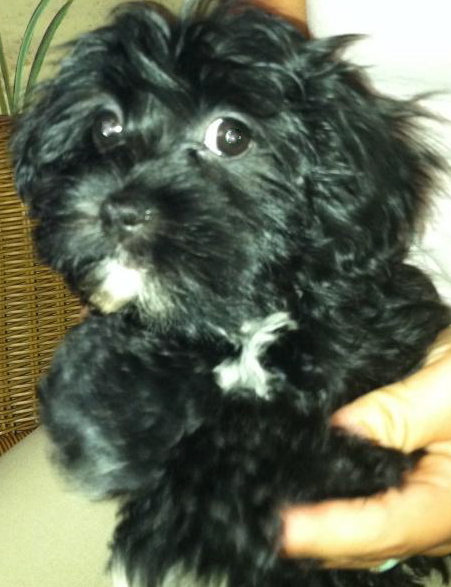
“Bella” is the cherished pet of Richard Cheska, who lives in Wellington, and bought her when she was a five month old puppy. Now a year old, Bella is a seasoned traveler, she’s been to Belgium twice and all over the US with Richard, who is a jumper/hunter trainer. “She goes everywhere with me,” he says fondly. “All over town, even restaurants, and the horse show.”
Her coat isn’t that difficult to care for, but Richard gets her clipped a couple of times a year. “And she doesn’t 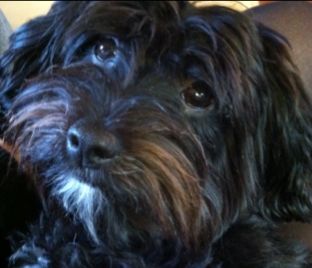 shed,” he says. Bella fits the textbook description of the Havanese breed: playful, gentle, people-friendly, with a joyful disposition. She does growl and bark at strange noises outside, but isn’t “yappy,” he says.
shed,” he says. Bella fits the textbook description of the Havanese breed: playful, gentle, people-friendly, with a joyful disposition. She does growl and bark at strange noises outside, but isn’t “yappy,” he says.
“I had a Corgi for 18 years, didn’t want another dog,” he says. But Bella is the best companion he could ever have wished for.
Cuba’s only native breed, the Havanese, is a descendent of breeds brought to Cuba from Spain, and could also be related to the Tenerife, an ancestor of the entire Bichon family. Once known as the Havana Silk Dog or the Spanish Silk Poodle, the Havanese evolved from its role as a pampered lap-dog of the aristocracy into a family companion, responsible for being a watchdog, child’s playmate, and herder of the family’s poultry. A small, sturdy dog, 8 1/2” to 11 1/2” tall, with a friendly disposition, the Havanese has a wavy, silky, profuse coat which remains extremely light – insulating and protecting the breed against harsh tropical heat. It comes in all colors, and should remain untrimmed.

During the Cuban Revolution, in the 1960’s, many islanders able to flee the island for sanctuary in the United Sates were forced to leave their beloved dogs behind. At one time, there were only 11 traceable purebred Havanese in the United States, and the breed faced extinction. A U.S. breeder, Mrs. Goodale, advertised in a Florida paper, and found two or three immigrant families who had brought their Havanese from Cuba. From them, Mrs. Goodale obtained 6 Bichon Havanese with pedigrees: a female with 4 female pups, and a young unrelated male. Later she was able to get 5 more males from Costa Rica.
As an experienced breeder, Mrs. Goodale began working with the 11 dogs. Her first lines appeared in 1974. The UKC recognized the Havanese breed in 1991, the AKC in 1996. Havanese popularity in the show ring and official registry have grown quickly, and these dogs are also now high in demand as family pets.
++++++++++++++++
Now, the “rest of the story,” the canine that should be the national dog of Cuba . . .
The Cuban Street Dog, Savvy Survivor
It’s a colorful rumor that the thousands of uncollared stray dogs roaming the island of Cuba are “Columbus Dogs,” whose ancestors traveled to the new world with the early explorer. But Cuba’s national passion for dogs extends back beyond Columbus’ arrival. When the Spanish first arrived in the Americas in the sixteenth century, they found at least twenty distinct breeds of dogs, and the Cuban Street Dog is the result of thousands of random crosses over hundreds of years.
By some estimates, there are over a million dogs in Cuba, half of which may be strays. Asleep in the road, ambling along the cobbled streets, and rummaging through garbage is an assortment of disparate hounds, from Dacshunds to German Shepherds. But most are middle sized, and lack specific breed characteristics. Weaving through the crazy Havana traffic of 1950’s Chevys and Fords, or trotting the dusty streets of a rural village, there seems to be a canine of some sort in view at all times.
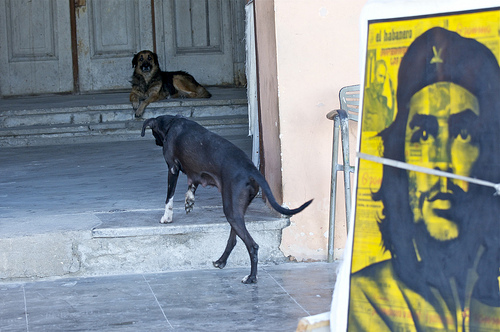
Much of Cuba’s cat population disappeared into the cooking pot during the terrible years of the early 1990’s, following the collapse of the Soviet Union, when monetary support for Cuba disappeared, when starvation and malnutrition stalked the land. But Cubans love their dogs too much to have actually eaten them, no matter how hungry. Nevertheless, during the ‘Special Period’ of a decade ago, many people could no longer afford to feed their beloved canines, and, with great sorrow, turned them out onto the streets. Most current street dogs are or are descended from house pets let loose, and are pretty friendly.
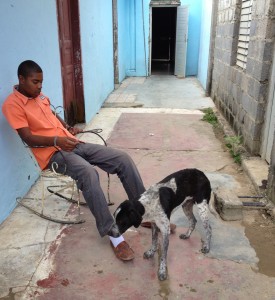
The strays have an uncanny knowledge of their surroundings, and instinctively know when it is or isn’t safe to scamper across the street. Not neutered, or spayed, and sans veterinary attention, they reproduce at will, skinny, sometimes scarred, four-legged derelicts, who will follow you five blocks for a crumb from your sandwich. But in rural areas and villages, domestic chickens, including baby chicks, peck the streets and yards, and have no fear of nearby bony, hungry, canines, who ignore the tasty feathered meals just feet away. “I don’t think that they (the dogs) have the strength to chase them,” observed my friend.
And then there are the more privileged hounds with a secure roof over their heads, as well-fed, pampered, and groomed as their owners’ meager resources allow. Some are kept on roofs, to deter thieves and intruders, some peer through iron barred windows and yard gates at passersby. An international dog show, the first of its sort, was well attended in a field near Havana’s Revolution Plaza this past November. Judges were flown in from several Latin America locations. “This is a small, poor country, but Cubans love dogs,” said Miguel Calvo, the president of Cuba’s dog federation, which organized the show. “We make a great effort to breed purebred animals of quality.”
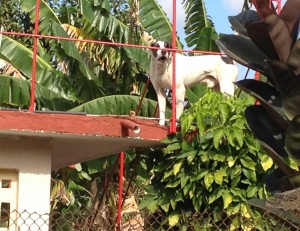
Commercially prepared pet food is not sold in Cuba, and providing enough chow for their pets is often a struggle for owners. Not that these dogs are abused. Quite the opposite. The deep-seated affection that they feel for their animals means that even strays usually find enough handouts to eke out an existence. Cuban society is steeped in Yoruba tradition, which holds that dogs are sacred animals, and should not be mistreated. Still, government euthanasia of strays is not always done in a humane manner. There are US and international organizations that have made contact with Cuban veterinarians, and work to improve the lives of Cuban Street Dogs. You are encouraged to visit their web page:
https://www.theaniplantproject.org/OUR_WORK.html
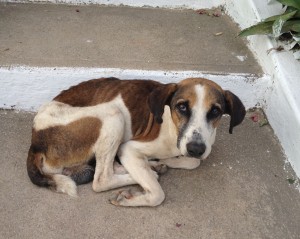
“In a perfect world, every home would have a dog, and every dog would have a home.”
Over a lifetime, Barbara Phillippi has had mostly “normal” dogs – a few German Shepherds and a bunch of wonderful “mutts,” each with its own wonderful, quirky, qualities. For many years, she taught 4-H dog obedience courses, under the authorization of Cornell University’s Cooperative Extension Services. That terrific program teaches the basics of dog behavior, of every breed, to young dog owners. Today she lives in Wellington with three Jack Russell Terriers – Woody, Gracie, and Buck. “These guys showed me a learning curve that I never knew existed!”

